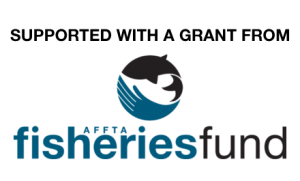ASMFC ACTION REQUEST- Menhaden Amendment 3

© David Shupp
The Atlantic States Marine Fishery Commission’s menhaden management plan is being amended, and Stripers Forever strongly supports the concept that menhaden should be managed using Ecological Reference Points (ERP’s) with whatever models are available today. With abundance of Menhaden rising and the geographic range growing, the time to switch from “single species” to EBFM is NOW.
Public hearing dates are fast approaching. It is extremely important that the ASMFC hear from as many individuals as possible. If you are unable to make the hearing date near you, written comments will be accepted until 5PM EST January 4, 2017.
Please click here to view all coast-wide meeting dates, times and locations: Menhaden Public Information Document (PID) for Draft Amendment 3 Hearings
If you are unable to make the meeting near you, written comments will be accepted via mail, fax and email until 5PM EST January 4, 2017. For this information please see page (2) of this document: Public Information Document (PID) for Draft Amendment 3 Public Comment
Thank you in advance for doing your part!
The following letter was sent in by SF in support of this position:
12/8/16
Megan Ware
Fishery Management Plan Coordinator
Atlantic States Marine Fisheries Commission
1050 North Highland Street, Suite 200A-N
Arlington, Virginia 22201
To Whom It May Concern:
On behalf of the 5,000 members of Stripers Forever (SF) who support the sustainable management of striped bass and the ecosystem components that support them, thank you for the opportunity to comment on the Menhaden Amendment 3 PID.
This organization strongly supports the use of ecosystem based fishery management (EBFM) as the primary tool for the process of promoting long-term sustainability of our marine resources.
As outlined in the Menhaden Amendment 3 PID, we will comment on the issues in order:
ISSUE 1: Reference Points
SF strongly supports the concept that menhaden should be managed using Ecological Reference Points (ERP’s) with whatever models are available today. With abundance of Menhaden rising and the geographic range growing, the time to switch from “single species” to EBFM is now.
Currently, Option D is the best solution. Managing menhaden at 75% of the pre-industrial fishing stock size and requiring that the population never drops below 40% will allow sustainable harvest and help menhaden continue to expand back into the northern and southern extremes of their former range. Option D will enable the population to continue to grow, while increasing menhaden’s value to the recreational fishing, commercial seafood, and tourism businesses that all depend on this important fish, and its predators. Conservation will benefit everyone.
ISSUE 2: Quota Allocation
SF feels that the ASMFC should revise the current allocation formula. More fish should be allocated to the bait sector, taking into account historical catch and recognizing the important role of the bait sector in regional economies. One state or entity taking 85% of the catch is inequitable and is counter to recent NOAA guidance on allocation.
Three options have the most potential to provide a fair and equitable distribution of catch:
Option B: State-specific quotas with a fixed minimum. Option F: Disposition quotas with at least 30% of catch allocated to the bait sector. Option G: fleet capacity quotas, with all fleets managed by a hard quota. Options B, F, G strike the best balance between current needs and future growth.
Two options should be removed from Amendment 3:
1) Option C: Coast wide Quota. This will produce a race to catch fish, which will be unfair to some states, especially in the North. 2) Option E: Regional management adds an unnecessary layer to an already complicated fishery.
ISSUE 3: Allocation Timeframe
SF feels that by considering only 2009-2011 or 2012-2016, the Board is unfairly excluding the significant catch history of other states; especially in the Northeast where the assessment shows processing plants existed until the 1980’s. Catch data from as early as 1955 should be considered. A variation of Option C: Longer Time-Series Average, going back to 1985 or earlier would be fairer. Option D (2012-2016) should be removed from the Amendment, as it is simply reflects the status quo.
Issue 4: Quota Transfers and Overage Payback
SF supports the concept that quota transfers should be unrestricted ONLY if completed prior to a state exceeding its quota. A state receiving a quota transfer after exceeding its quota should be required to take action to avoid the overage in the following year and should not be allowed to accept a quota transfer in the following year.
ISSUE 5: Quota Rollovers
SF feels that quota rollovers should not be allowed. Rollovers may lead to unintended consequences with regard to localized depletion or quota allocation on a year to year basis.
ISSUE 6: Incidental Catch & Small Scale Fishery Allowance
SF feels that the current by-catch allowance is a loophole that allows millions of pounds of menhaden to be caught, but not counted toward the quota. This exemption was created to address a problem that should be eliminated under the allocation option being proposed in this action. All harvest MUST be counted.
ISSUE 7: Episodic Events Set Aside
SF feels that quota rollovers should not be allowed. Rollovers may lead to unintended consequences with regard to localized depletion or quota allocation on a year to year basis. SF feels that the episodic events set aside is unnecessary. A fair allocation and a quota transfer process that includes accountability is enough flexibility to manage expected fluctuations in local abundance of a sustainable fishery.
ISSUE 8: Chesapeake Bay Reduction Fishery Cap
The Bay remains the primary nursery for the coast wide menhaden population. It is the area where the majority of catch is concentrated. The cap should be kept in Amendment 3, but reduced to 96 million pounds (closer to current levels) to protect against localized depletion and provide for the ecosystem services that many predators depend on in the Bay.
ISSUE 9: Research Programs and Priorities
SF supports the idea that ASMFC should prioritize fishery independent research into historical abundance, effects of localized depletion, food web interactions and ecosystem services of menhaden.
Stripers Forever appreciates the opportunity to comment on the Menhaden Amendment 3 PID. There are a lot of important issues that need to be resolved. SF continues to believe that many of them will be resolved, if this important species is managed with EBFM.
Sincerely,
C.M.”Rip” Cunningham Jr.
Former Chair, New England Fishery Management Council
National Board Member, Stripers Forever






